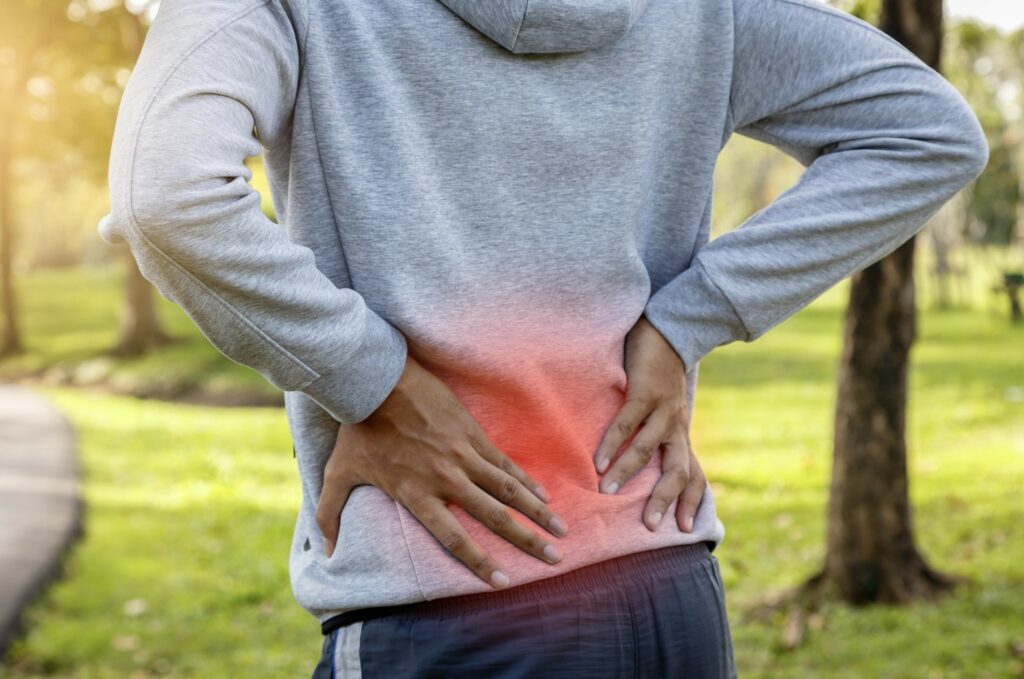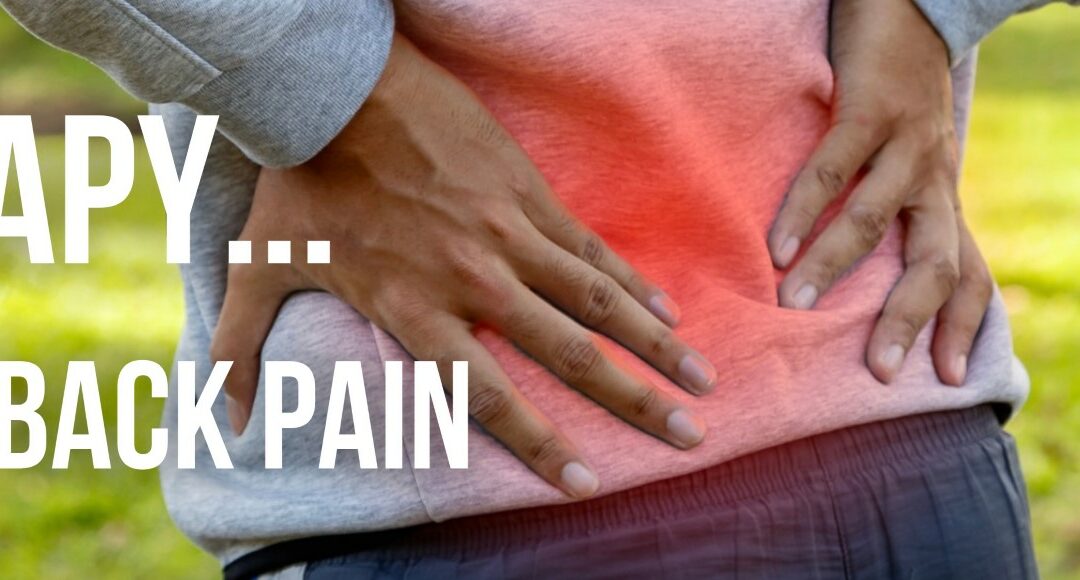Lower back pain is one of the most common conditions that we treat, whether it be acute or chronic pain.
Pain is often experienced at the bottom of the back, in the lumbar region, where the spine meets the pelvis. So, what can cause this pain?
There are numerous causes for this kind of pain, such as:
- Sacroiliac Join Pain (SIJ) – The sacroiliac joint is where the lower part of the spine (sacrum) connects to the pelvis (ilium). There are two sacroiliac joints, one on each side, with ligaments in each joint that hold the bones together. Sacroiliac joint pain is most commonly felt in the low back and buttock but can also be referred into the thigh and leg. Sacroiliac pain can be aggravated with prolonged sitting or standing, standing on one leg, stair climbing, going from sit to stand, and with running.
- Anteriorly tilted pelvis: This is often caused by over active hip flexors. Due to the attachment area of the hip flexors (pelvis onto the thigh), if the hip flexors are hypertonic/over active then it can cause the pelvis to tilt anteriorly which causes a hyper lordotic curve in the lower spine.
- Posteriorly tilted pelvis: This is often caused by over active hamstrings. A posterior tilt in the pelvis can change the lordotic curve of the lumbar spine resulting in a change in transfer of load.
- Gluteus Maximus pain: This is often mistaken as lower back pain. You will be surprised as to how high the Glute Max sits within the pelvis, and so what is often seen as lower back pain is actually pain stemming from the Glute Max.
- Glute Medius weakness: Our Glute Medius is the second largest gluteal muscle. It’s job is to stabilize the hip via its connection with the femur and to abduct (take out) the hip. Weakness in the muscle can result in compensation from other lower back muscle groups resulting in discomfort.
- Disk Herniation: Disc herniation is where part of the vertebral disc, which is a pad made of fibrocartilage that sits between the vertebrae, protrudes into the spinal column. This occurs when the disc is compressed or damaged resulting in the soft nucleus being pushed out. This condition normally heals by itself, however manual therapy and exercise can be used to help the process and prevent re-occurrence.

These are just a handful of the many causes of lower back pain. There are many pathophysiological causes for back pain which require further investigation. If you think this applies to you then seek advice.
To get started book in with Josh for a postural assessment where he can take a look to see what could be causing your pain.

